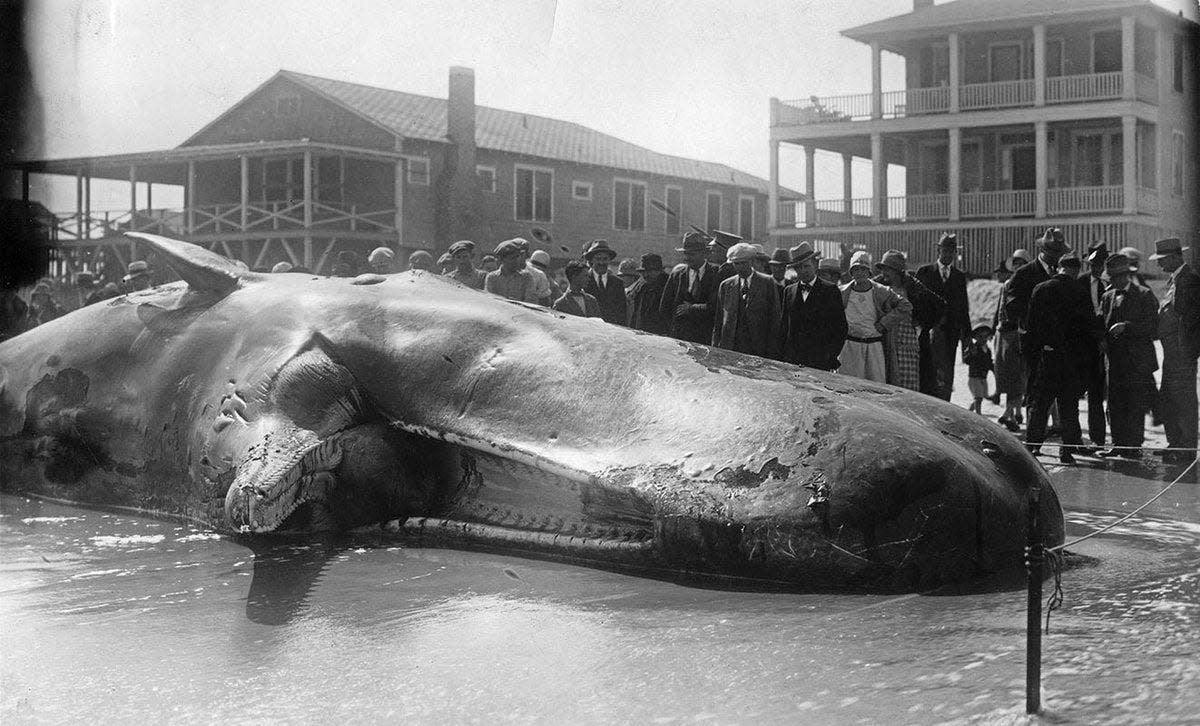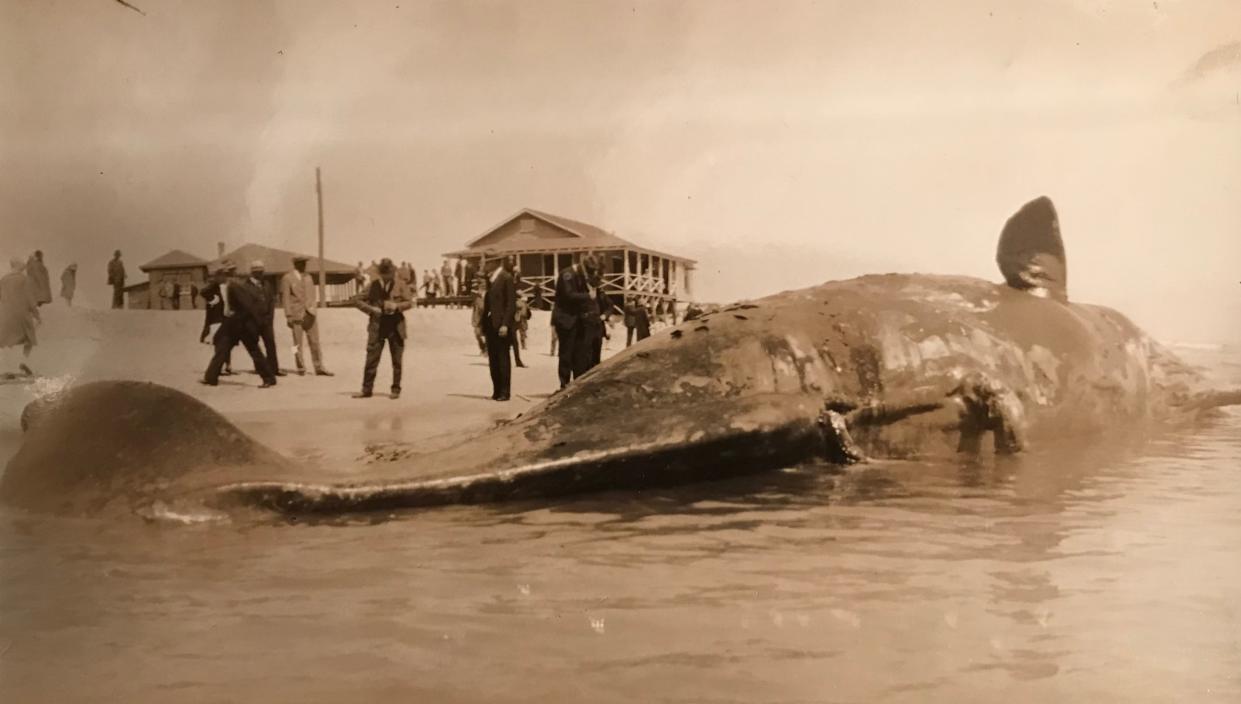Trouble comes to town: When a whale captivated Wrightsville Beach

In the spring of 1928, a quiet morning on Wrightsville Beach turned into a madhouse when word spread of a massive sperm whale dead on the shore.
The 54-foot-long whale, soon to be named Trouble, became a must-see sight for the region, attracting some 50,000 people in a matter of days. Kids climbed on it, cameras took pictures of it and local officials reaped in the benefits of its buzzworthy arrival.
But soon, nature took its toll, and the decaying whale became a health hazard, beginning what would become an exhaustive two-year journey to preserve the whale in the N.C. Museum of Natural Sciences in Raleigh, where it still hangs today.
On April 5, 1928, a year-round Wrightsville Beach resident was the first to spot the whale on the shore while on a morning walk. The whale weighed about 50 tons.
It didn't take long for word-of-mouth to draw a crowd to see Trouble. Only a few years earlier, more transportation options opened from Wilmington to Wrightsville Beach, which only added to the number of onlookers.
An edition of the Wilmington Morning Star turned the whale into an advertisement, telling readers it's an "opportunity of a lifetime to see one of these huge monsters."

Officials later believed Trouble was becoming a health concern after weeks being on the shore. It was, after all, a dead whale carcass. And the smell didn't help.
Wrightsville Beach wanted the whale gone, and it was set to haul it at least 20 miles out to sea. That plan struggled when a tow company couldn't get Trouble to budge, and then a storm made for another delay.
Herbert Hutchinson Brimley, curator of N.C. Museum of Natural Sciences in Raleigh, found out about the whale and saw a chance for an educational tool and thus preservation.
Brimley worked a deal with the mayor to have it taken to a friend's property on nearby Topsail Island. This time, digging underneath it and wrapping chains around the whale worked, and it headed north to Topsail.
By late April, the whale was disassembled. Bones were retrieved from Topsail and taken to Raleigh for preservation.
The process to reassemble began in late 1929 and by early 1930, Trouble's bones were on display at the museum. It has since lived up to its moniker at least once. In 1998, when a museum expansion meant bringing it down for renovation. It was then discovered asbestos was within the bones, which required cleaning.
Former StarNews reporter Hunter Ingram contributed to the story.
This article originally appeared on Wilmington StarNews: Wrightsville Beach, NC dealt with Trouble the whale in 1928
